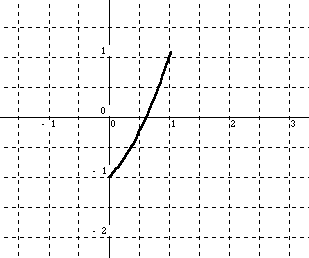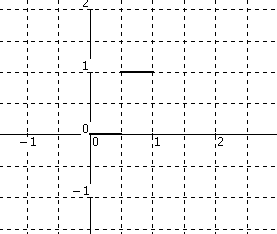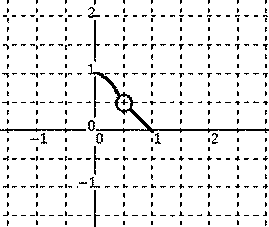There is really nothing surprising about this theorem, but its importance is found in an idea called the completeness of the real numbers. This idea asserts that there are no holes or gaps in the real numbers, that they are continuous.
A frequent use of this theorem is in proving the existence of roots of function.
f(x) = x 2 + x – 1
(shown at right) has a root on the interval [0, 1].
Solution: Since f(x)
is a polynomial function, it is continuous for all values of x in
the interval. Now, the hypothesis of the IVT asserts that there is some
value of x = c such that f(c) is between f(0)
and
f(1).Since
f(0) = -1 and f(1) = 1, then there
exists a value of x = c such that f(c) = 0.Therefore
a root of the function exists on the interval [0, 1].
Note that the IVT establishes the existence of the root, but does not establish its value.




